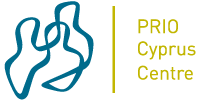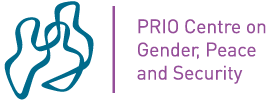Security policy for globalized science
Posted Wednesday, 10 Sep 2025 by Gunnar Sivertsen

Research security is a new concept in research policy. Donald Trump introduced it in a National Security Presidential Memorandum in 2021. Other NATO countries soon followed up. A Council Recommendation on Research Security made the concept official in the EU in 2024. It is now accompanied by lists of dual-use technologies, also called critical technology areas, that are published for the awareness of the public sector research organizations, who are also required to follow new guidelines for responsible internationalization.
For the first time in history, security policy is directly addressing public sector research in general. Traditionally, private sector R&D and military R&D have been secured by export control and surveillance. The public sector has been granted academic freedom to pursue the scientific values of open exchange and peer-reviewed publishing of ideas and results, and to choose collaboration partners across countries. It was believed that these values could best provide scientific and societal progress.
An almost sudden change
The change of policy has been abrupt. To take my own country, Norway, as an example, a new governmental Long-term Plan for Research and Higher Education 2023–2032 passed the parliament only two years ago without any mentioning of research security. Security was mainly a question of protecting privacy in digital infrastructures. Large chapters were devoted to the policies for Open Science and Academic Freedom, both of which are now challenged by security policy.
Then, in March this year, the same government published a new white paper with the title Secure Knowledge in an Insecure World (only in Norwegian) with a large new chapter titled Research Security in Times of Increasing International Tensions. The white paper is only about government-funded research. Like in all other countries, the new concept research security is about controlling the public research sector: universities and public research institutes.
The rapid change in policy comes with challenges, dilemmas, and possible unforeseen consequences that are so far not understood by the authorities responsible for defense and international relations. They seem to believe that knowledge is created within a country and then exported to, or withheld from, other countries. The following is a list of problems that may arise from this limited perspective.
Science is globalized
It was easier during the Cold War to prevent non-allied states from accessing knowledge and technology that affected defense capabilities. Passports and mail could be controlled. Now, research is conducted and published digitally in global collaborative networks and infrastructures without border controls.
Also making it easier fifty years ago, NATO countries dominated international scientific journals. Only a tiny share of articles from NATO countries had co-authors outside of NATO. Now, the share is one third. And although NATO has expanded with several new member states, the rest of the world contributes more articles to the journals than the NATO countries do.
As an example, the world’s most prestigious technological journals published by the American IEEE organization are now fully globalized with more articles from China than from the USA. Each Chinese article openly explains the methods and results in detail. This is an example of the ethos and practice of the public research sector worldwide. Of course, Chinese engineering scientists, like their colleagues worldwide, professionally and carefully select the studies and results to be openly exposed and discussed in their international communities. But they know that they gain from it, also for the research they keep secret.
Publishing is the opposite of secrecy
Still, the requirement for success in the public research sector is to disclose what has been discovered, how one arrived at it, and whom one collaborated with. Publishing is required, which is the opposite of secrecy. New manuscripts may be peer-reviewed by other experts in non-allied states. Openly and across borders, scientific publications constantly reveal what we are doing although the doors to our offices or laboratories may be closed. The references in the articles and the affiliations of authors show how all countries depend on each other for creating new knowledge.
Informal collaboration is hard to control
International scientific collaboration takes place both informally by the initiative of the researchers themselves, and formally through bilateral and multilateral agreements among states or other facilitators and funders of research. Only formal collaboration can be directly influenced by national policies. Agreements can be cancelled, and certain backgrounds or nationalities can be excluded in institutional recruitment processes.
Informal collaboration is more independent. Researchers continue to choose their international collaborators in the interest of performing the best research. They may understand and support sanctions at the national level, but discrimination of individuals by nationality is against academic values. An example was shown in our study about what happened to Russian science after the invasion of Ukraine in February 2022. The degree of informal international research collaboration with Russian scientists remained relatively stable. The dramatic observed decline in Russia's scientific output was instead due to domestic factors: brain drain, reallocation of resources from research to war, and reduced academic freedom. The lesson learned is that researchers worldwide want to retain their freedom to choose informal collaborators. Our study also showed this in another way. We were four co-authors, two from China, one from Norway, and one from Russia.
Co-funding is unavoidable
Informal collaboration necessarily leads states to share their resources for research across defense alliances. They can only direct their funding of research through institutional state budgets and public external funders. A more complete story is told by funding acknowledgements in scientific articles based on informal collaboration. In practice, but not visible otherwise, the largest governmental funder of research in the world, the National Natural Science Foundation of China (NSFC), is a major funder of European research by its contributions to informal research collaboration. Europe is funding Chinese research in the same way.
Dual-use technology is hard to define
In our time, almost all advanced technologies and their foundations in basic science have dual use. Nations consciously and officially invest in science for both civil and military purposes. The USA is a clear example. Over several decades, the proportion of government investment in military R&D versus civil R&D has been much larger than in most other countries. The USA has thereby experienced success, e.g., in the aviation industry, in becoming a leading technological nation in the public and commercial sector as well.
The difficulty with defining dual-use technology in a practical way is seen in the newly developed lists of critical technologies. They are very broad and even include large disciplines in biomedical research. Such lists were originally developed for export control of products from the commercial R&D sector. They will be much harder to apply to research collaboration and scientific publishing in the open and differently organized public research sector.
Science diplomacy as a solution
I have described five large-scale problems that the new security policy for the public research sector will encounter: Science is already globalized, publishing is the opposite of secrecy, informal research collaboration is hard to control, co-funding is unavoidable, and dual-use technology is hard to define. These problems will be hard to solve from an implementation perspective.
From the perspective of the recipient of the policy, the public research sector, three more problems can be added. Firstly, the new policy may be experienced as in conflict with academic freedom and the scientific values researchers were trained to identify with and by which they have experienced success. Secondly, the original motivation for the change of policy might be questioned since it started with Trump’s rivalry with China as a superpower. Thirdly, the policy can be seen as in conflict with the Open Science policies that European countries officially implemented before 2021 in collaboration with the institutions.
The engagement for academic freedom and Open Science is not equally distributed across the world. These mainly European ideas are only partially supported by the governments of China and the USA. In between the two dominating and rivalling nations, the typical European response is “to be as open as possible and closed as necessary”. I don’t think it will work. Public research cannot be closed. The five implementation problems described above will continue to create challenges and dilemmas, and they will demand very costly efforts. Easier than closing public research will be to make everything even more transparent. Today’s global scientific publishing infrastructure not only records where we work, what we do, and who we collaborate with. It also records who we are, our personal ID, and our professional histories, and it is increasingly used for data sharing. More transparency in the sense of Open Science could revitalize the original meanings and functions of science diplomacy: disclosing and collaborating. Europe needs a more principal and sustainable European response to Trump’s initiative in 2021 to enforce ‘research security’ on open and independent public research.
- Gunnar Sivertsen, Research Professor Emiritus, Nordic Institute for Studies in Innovation, Research and Education (NIFU), Oslo





